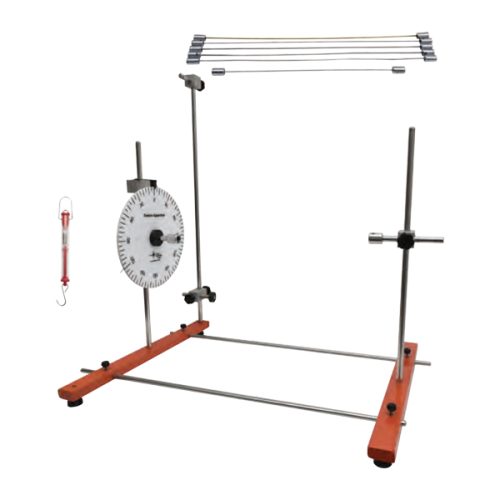Overview
The torsion apparatus experiment measures the elastic properties of metal rods by observing torsion oscillations and the corresponding torque. By applying force to a rod and measuring the resulting torsion angle, the experiment calculates the torsion constant (DW), which depends on the material and dimensions of the rod. The relationship between torque (M) and torsion angle (Ф) is linear within the elastic range, and the torsion coefficient can be derived from this slope. The experiment helps understand material behavior up to the limit of elasticity and the onset of plastic deformation.
Significance
This experiment is important for understanding how materials behave under torsional stress. It aids in designing mechanical components, such as shafts and beams, that can withstand rotational forces without permanent deformation, ensuring durability and efficiency in engineering applications.
